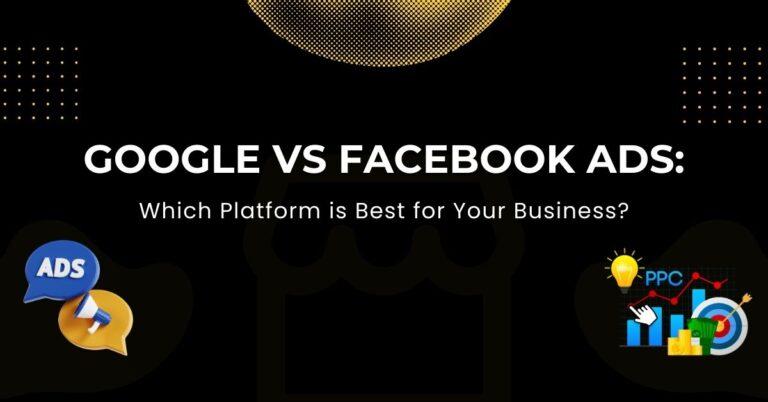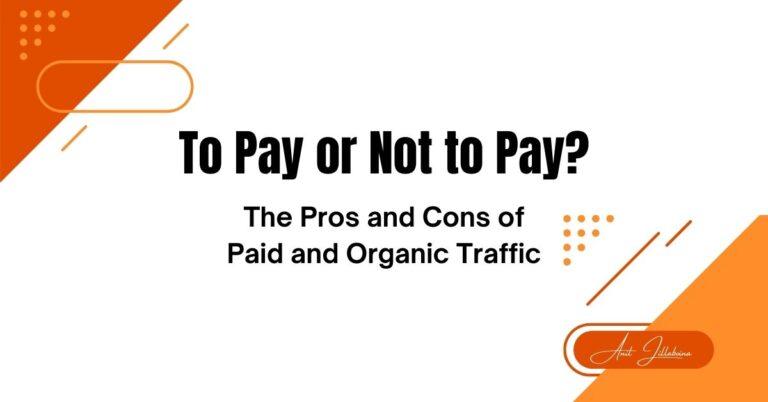I. Understanding the Basics of Paid Advertising
A. Defining Paid Advertising and its Different Forms
Paid advertising refers to the process of promoting products, services, or brands through paid channels and platforms. There are various forms of paid advertising, including search ads, display ads, social media ads, video ads, and sponsored content. Each form requires a unique strategy and approach to maximize its potential and achieve desired results.
B. Exploring the Concept of Pay-Per-Click (PPC)
Pay-Per-Click, also known as PPC, is a common pricing model in paid advertising. It means that advertisers only pay when their ads are clicked on by users. PPC campaigns typically run on search engines like Google Ads, where advertisers bid on specific keywords relevant to their target audience. Understanding the concept of PPC is essential as it forms the foundation of many paid advertising campaigns.
C. Key Platforms and Networks for Running Paid Advertising Campaigns
To get started with paid advertising, it is crucial to identify the platforms and networks that align with your business objectives and target audience. Google Ads, Facebook Ads, Instagram Ads, LinkedIn Ads, and Twitter Ads are some of the key platforms widely used by businesses for running paid advertising campaigns. Each platform offers unique targeting tools, ad formats, and audience reach, allowing advertisers to tailor their campaigns accordingly.
II. Setting Goals and Targeting the Right Audience
A. Identifying Business Objectives and Aligning them with Paid Advertising Goals
Before diving into paid advertising, it is important to define your business objectives and align them with your paid advertising goals. Are you looking to increase brand awareness, drive website traffic, generate leads, or boost sales? Clear objectives will guide your advertising strategy and help you measure success effectively.
B. Conducting Thorough Market Research to Understand the Target Audience
One of the key elements of a successful paid advertising campaign is targeting the right audience. Conducting thorough market research will give you insights into the demographics, interests, and online behaviors of your target audience. Understanding their needs and preferences enables you to create compelling ads that resonate with them.
C. Utilizing Tools and Platforms to Define Target Demographics, Interests, and Online Behaviors
Platforms like Google Ads, Facebook Ads, and Audience Insights provide robust targeting options to define your target audience. You can set parameters based on demographics, interests, online behavior, and even specific locations. Leveraging these tools helps you reach the right audience and optimize your budget by focusing on those most likely to engage with your ads.
III. Crafting an Effective Paid Advertising Strategy
A. Developing a Clear Value Proposition and Compelling Ad Copy
A compelling value proposition is crucial in enticing users to engage with your ads. Clearly communicate the unique benefits and advantages your products or services offer. Your ad copy should be concise, persuasive, and tailored to your target audience. Emphasize relevant features and benefits that resonate with their needs or pain points.
B. Utilizing Eye-Catching Visuals and Engaging Multimedia Elements
Visual content plays a vital role in capturing users’ attention amidst the sea of online ads. Use relevant, high-quality images or videos that align with your brand and message. Incorporate engaging multimedia elements such as animations, infographics, or interactive content to make your ads stand out and leave a lasting impression.
C. Incorporating Keywords and SEO Techniques to Optimize Ad Performance
For search engine advertising, incorporating keywords relevant to your business is crucial. Perform keyword research to identify high-volume, low-competition keywords that align with your target audience’s search queries. Additionally, optimizing your landing pages for relevant keywords and utilizing SEO techniques can improve your ad’s visibility and overall performance.
IV. Budgeting and Bidding Strategies
A. Determining the Appropriate Budget for Paid Advertising Campaigns
Setting a realistic budget is important to ensure that your paid advertising campaigns deliver results without breaking the bank. Take into consideration your business objectives, target audience size, and industry competition while determining your budget. Begin with a modest investment and gradually increase it based on campaign performance and ROI.
B. Understanding Different Bidding Models and their Implications
There are several bidding models available in paid advertising, including Cost-Per-Mille (CPM), Cost-Per-Click (CPC), and Cost-Per-Acquisition (CPA). Each model has its own advantages and implications. CPM is best for increasing brand visibility, CPC for website traffic, and CPA for achieving specific conversion goals. Understand the bidding model that aligns with your objectives and monitor its impact on campaign performance.
C. Tips for Maximizing Budget Efficiency and Optimizing Bidding Strategies
Optimizing your budget and bidding strategies can help you make the most of your investment. Monitor the performance of your campaigns regularly and make adjustments based on the data. Identify underperforming keywords or targeting parameters and optimize them. Consider implementing ad scheduling to display ads during peak times or days when your target audience is most likely to engage.
V. Monitoring and Analyzing Campaign Performance
A. Utilizing Analytics Tools to Track the Effectiveness of Paid Campaigns
Analytics tools like Google Analytics and Facebook Ads Manager offer insightful data on the performance of your paid advertising campaigns. You can track key metrics such as Click-Through Rate (CTR), Conversion Rate, Return on Ad Spend (ROAS), and Cost-Per-Acquisition (CPA). Regularly monitor these metrics to evaluate campaign effectiveness and identify areas for improvement.
B. Analyzing Key Performance Metrics and Making Data-Driven Decisions
Understanding and analyzing key performance metrics is essential to make data-driven decisions regarding your paid advertising campaigns. Identify which metrics align with your business objectives and track them consistently. Use these insights to identify trends, optimize targeting, refine ad copy, and improve overall campaign performance.
C. The Importance of Split Testing and A/B Testing to Continually Improve Ad Performance
Split testing and A/B testing are powerful strategies to improve the performance of your paid advertising campaigns. Test different ad variations, such as headline, copy, visuals, or CTAs, and compare their performance side by side. Continually refine and optimize your ads based on the insights gained from these tests to maximize your advertising ROI.
VI. Optimizing and Tweaking Paid Advertising Campaigns
A. Identifying Low-Performing Campaigns and Adjusting Targeting Parameters
Regularly review the performance of your paid advertising campaigns and identify any underperforming or low-converting campaigns. Adjust your targeting parameters such as demographics, interests, or keywords to reach a more relevant audience. Experiment with different audience segments to find the sweet spot that yields optimal results.
B. Refining Ad Visuals, Copy, and CTAs for Better Engagement
If you notice a decline in ad engagement or click-through rates, consider refining your ad visuals, copy, and Call-to-Action (CTA). Ensure that your visuals are visually appealing and relevant to your offer. Optimize your ad copy to highlight the value proposition and create a sense of urgency. Experiment with different CTAs to encourage users to take action.
C. Strategies for Remarketing to Retain and Convert Potential Customers
Remarketing is an effective strategy to reach potential customers who have previously shown interest in your products or services. By showing ads to users who have visited your website or engaged with your previous ads, you can increase brand recall and re-engage them in the buying process. Design enticing offers or promotions specifically for remarketing campaigns to encourage conversion.
VII. Staying Up-to-Date with Trends and Best Practices
A. Keeping Abreast of the Changes and Updates in Paid Advertising Algorithms and Guidelines
Paid advertising platforms and networks continuously update their algorithms and guidelines. Stay informed about these changes to adapt your campaigns and strategies accordingly. Monitor industry forums, blogs, and official updates from platforms to stay ahead of the curve and leverage new features or opportunities.
B. Learning from Industry Leaders and Following Best Practices for Improved Results
Industry leaders and experts often share valuable insights and best practices related to paid advertising. Attend webinars, read blog posts, or follow influential figures in the field to stay informed and learn from their experiences. Adapting proven strategies and adopting best practices can significantly improve your paid advertising results.
C. Leveraging Emerging Trends to Stay Ahead of the Competition
The advertising landscape is ever-evolving, and staying up-to-date with emerging trends is crucial to stay ahead of the competition. For example, voice search and video ads are gaining popularity, and early adopters can stand out and tap into a growing audience. Continually evaluate new trends and assess their relevance to your target audience and business objectives.
Conclusion
Unlocking the power of paid advertising requires a solid understanding of its basics, setting clear goals, and targeting the right audience. Crafting effective ad strategies, budgeting strategically, and monitoring campaign performance are key to achieving success. Continual optimization, data analysis, and adapting to industry trends will enable you to achieve long-term success in the dynamic world of paid advertising.
Thank you for reading! Share your experiences and questions in the comments below!




